9 Best Herbal Tinctures For Peripheral Arterial Occlusive Disease
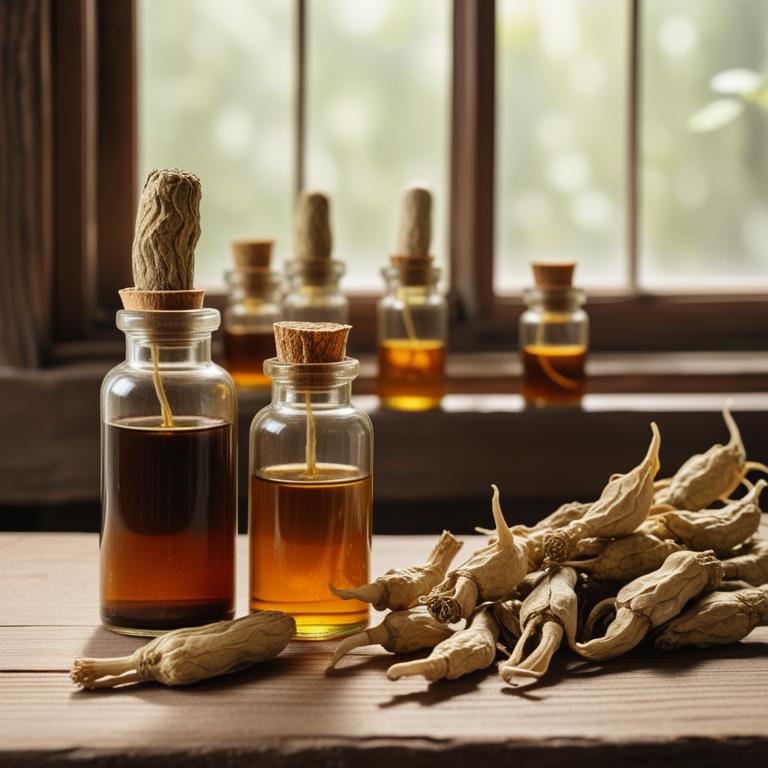
Herbal tinctures for Peripheral arterial occlusive disease are natural liquid extracts made from plants and used to treat the condition characterized by the narrowing or blockage of arteries, leading to reduced blood flow to the limbs.
The benefits of using herbal tinctures for this ailment include improved circulation, reduced inflammation, and enhanced overall cardiovascular health.
Herbal tinctures such as Ginkgo biloba, which improves blood flow and reduces oxidative stress, and Turmeric, which reduces inflammation and improves cardiovascular health, have shown promise in treating Peripheral arterial occlusive disease.
Additionally, herbal tinctures like Hawthorn, which improves cardiovascular health and reduces blood pressure, and Ginger, which reduces inflammation and improves circulation, may also be beneficial in managing this condition.
According to "Annales Academiae Medicae Stetinensis", tinctures for peripheral arterial occlusive disease, specifically PADMA-28, a vegetable preparation, have shown a marked, statistically significant elongation of the claudication distance in patients with diagnosed arteriosclerosis affecting the lower extremities in II stage.
Below there's a list of the 9 best herbal tinctures for peripheral arterial occlusive disease.
- 1. Ginkgo biloba tinctures
- 2. Panax notoginseng tinctures
- 3. Paeonia lactiflora tinctures
- 4. Ruscus aculeatus tinctures
- 5. Angelica sinensis tinctures
- 6. Astragalus membranaceus tinctures
- 7. Commiphora mukul tinctures
- 8. Tribulus terrestris tinctures
- 9. Eucommia ulmoides tinctures
Also you may be interested in...
TODAY'S FREE BOUNDLE
Herb Drying Checklist + Herbal Tea Shopping List + Medicinal Herbs Flashcards
Enter you best email address below to receive this bundle (3 product valued $19.95) for FREE + exclusive access to The Aphotecary Letter.
$19.95 -> $0.00
1. Ginkgo biloba tinctures
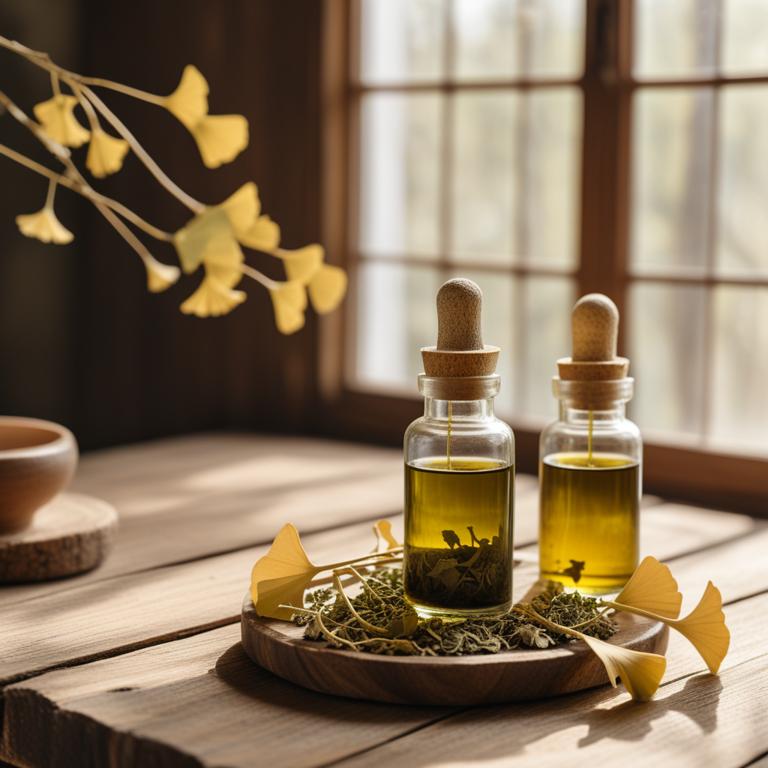
Ginkgo biloba tinctures have been studied for their potential in treating peripheral arterial occlusive disease, a condition characterized by narrowed or blocked arteries.
The flavonoids and terpenoids present in Ginkgo biloba, such as quercetin, kaempferol, and bilobalide, help to improve blood flow and reduce inflammation, which in turn can alleviate symptoms of this ailment.
The bioactive constituents of Ginkgo biloba tinctures, including flavone glycosides and terpenoid lactones, have been found to enhance vasodilation, reduce platelet aggregation, and scavenge free radicals, thereby contributing to the treatment of peripheral arterial occlusive disease.
The benefits of Ginkgo biloba tinctures in treating this condition include improved circulation, reduced pain and discomfort, and enhanced quality of life for individuals suffering from peripheral arterial occlusive disease.
Related Study
According to "Arzneimittel-Forschung", Ginkgo biloba tinctures for peripheral arterial occlusive disease, specifically in patients with Fontaine's stage IIb, have been shown to be more effective when taken in a higher dosage of 240 mg daily, resulting in a statistically significant mean increase of 107.0 meters in pain-free walking distance after 24 weeks of treatment compared to the standard dosage of 120-160 mg daily.
2. Panax notoginseng tinctures

Panax notoginseng tinctures have been studied for their potential in treating peripheral arterial occlusive disease (PAOD) due to their anti-inflammatory and vasodilatory properties.
These properties help to improve blood circulation, reduce blood pressure, and prevent platelet aggregation, thereby alleviating symptoms of PAOD.
The bioactive constituents of Panax notoginseng, including ginsenosides and saponins, are responsible for its therapeutic effects, which include improving cardiovascular function and reducing oxidative stress.
By using Panax notoginseng tinctures, individuals with PAOD may experience improved symptoms, reduced risk of complications, and enhanced quality of life.
Related Study
According to the study, Panax notoginseng tinctures, specifically its active constituent Ginsenoside Rb1, may be beneficial in treating peripheral arterial occlusive disease by inhibiting adhesion events through the Nrf2-p38-VCAM-1 pathway and protecting endothelial cells from oxidative stress and inflammation.
3. Paeonia lactiflora tinctures
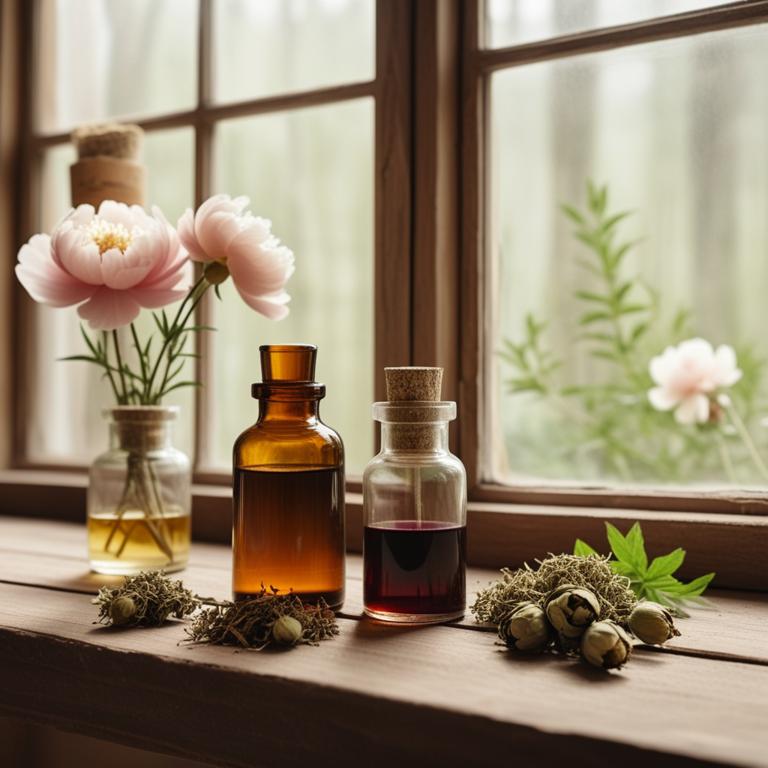
Paeonia lactiflora tinctures have been studied for their potential in treating peripheral arterial occlusive disease, a condition characterized by reduced blood flow to the limbs.
The tinctures' anti-inflammatory and anticoagulant properties help to improve blood flow and reduce inflammation in the affected areas, thus alleviating symptoms of the disease.
The bioactive constituents of Paeonia lactiflora, including flavonoids, phenolic acids, and paeoniflorin, contribute to its therapeutic effects by inhibiting platelet aggregation and improving vascular function.
The benefits of using Paeonia lactiflora tinctures to treat peripheral arterial occlusive disease include improved blood flow, reduced risk of complications, and enhanced quality of life for patients suffering from this condition.
4. Ruscus aculeatus tinctures

Ruscus aculeatus tinctures have been explored as a potential treatment for peripheral arterial occlusive disease (PAOD), a condition characterized by the narrowing of blood vessels in the limbs.
The anti-inflammatory and antioxidant properties of Ruscus aculeatus tinctures may help to alleviate symptoms of PAOD by reducing inflammation and improving blood vessel function.
The bioactive constituents, including flavonoids and phenolic acids, in Ruscus aculeatus tinctures may contribute to their potential therapeutic benefits, such as vasodilation and improved blood flow.
By reducing inflammation and improving blood vessel function, Ruscus aculeatus tinctures may help to alleviate symptoms of PAOD, including pain and fatigue, and potentially improve quality of life for individuals with this condition.
Related Study
According to "Journal of alternative and complementary medicine (New York, N.Y.)", Ruscus aculeatus tinctures do not appear to be specifically mentioned for the treatment of peripheral arterial occlusive disease, but they have shown promise in treating chronic orthostatic hypotension (OH) by causing venous constriction, reducing venous capacity, and alleviating symptoms of OH, which may also be beneficial for patients with peripheral arterial occlusive disease.
5. Angelica sinensis tinctures
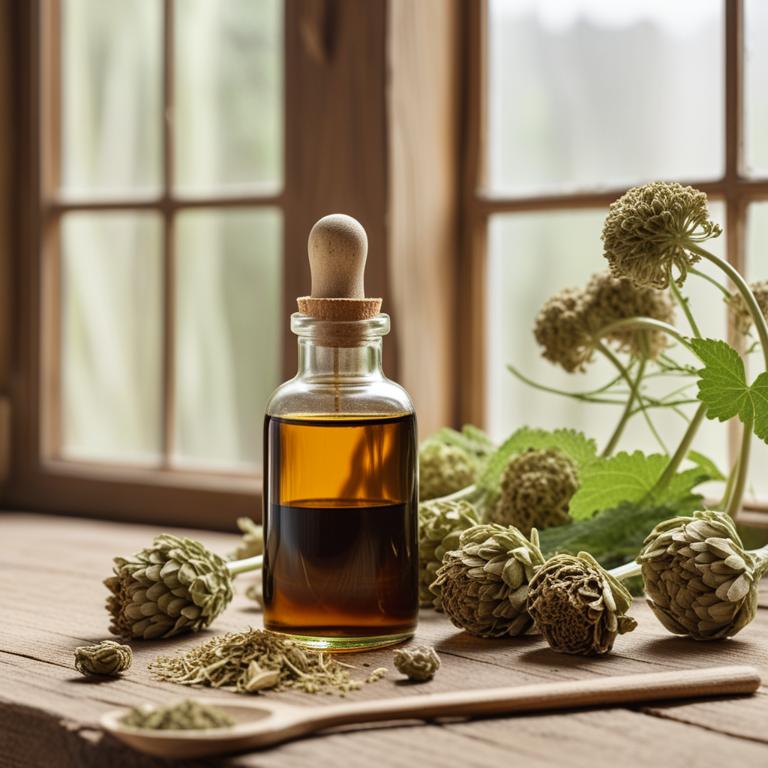
Angelica sinensis tinctures have been traditionally used to treat peripheral arterial occlusive disease (PAOD) due to their anti-inflammatory, antioxidant, and vasodilatory properties.
The herbal preparation helps to improve blood flow and reduce blood viscosity, thus alleviating symptoms of PAOD such as intermittent claudication and pain in the limbs.
The bioactive constituents of Angelica sinensis, including ferulic acid, ferulic acid derivatives, and polysaccharides, contribute to its therapeutic effects by promoting angiogenesis, inhibiting platelet aggregation, and scavenging free radicals.
The benefits of using Angelica sinensis tinctures to treat PAOD include improved exercise tolerance, reduced pain and discomfort, and enhanced quality of life for patients with this condition.
6. Astragalus membranaceus tinctures
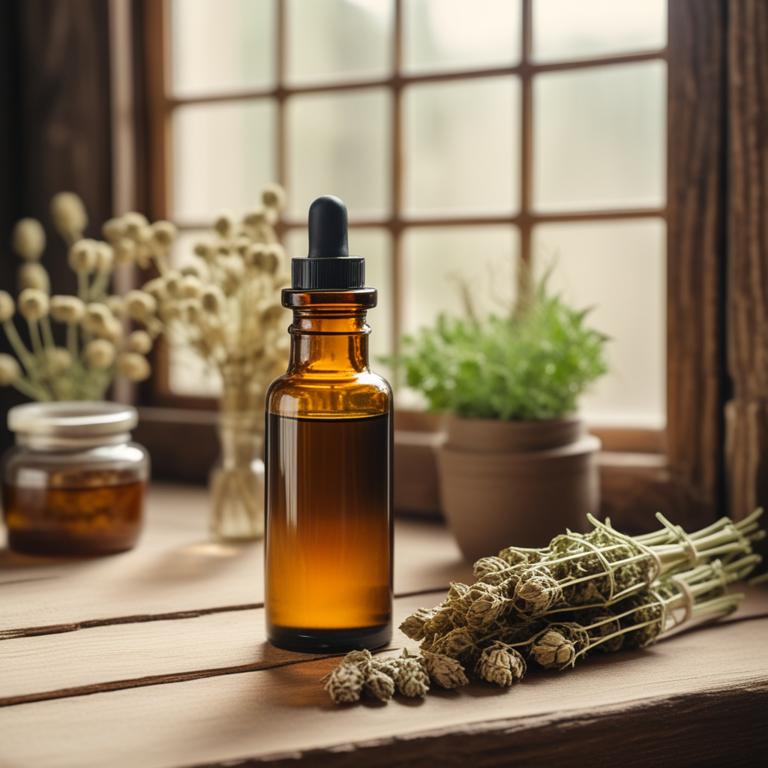
Astragalus membranaceus tinctures have been traditionally used to treat peripheral arterial occlusive disease (PAOD), a condition characterized by narrowed or blocked blood vessels in the legs.
The bioactive constituents of Astragalus membranaceus, including flavonoids, saponins, and polysaccharides, exhibit vasodilatory, anti-inflammatory, and antioxidant properties, which help to improve blood flow, reduce inflammation, and protect against oxidative stress in the affected blood vessels.
By increasing blood flow and reducing inflammation, Astragalus membranaceus tinctures may help to alleviate symptoms of PAOD, such as pain, fatigue, and cramping in the legs, and improve quality of life for individuals with this condition.
The benefits of using Astragalus membranaceus tinctures to treat PAOD include improved cardiovascular health, enhanced vasodilation, and reduced risk of complications associated with this condition.
7. Commiphora mukul tinctures
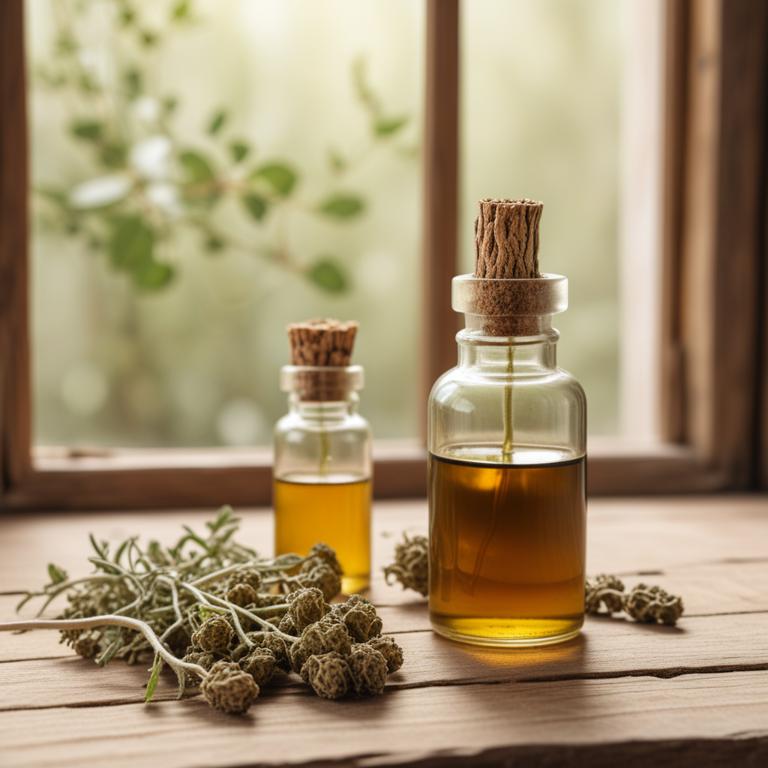
Commiphora mukul tinctures, derived from the guggul tree, have been traditionally used to treat peripheral arterial occlusive disease (PAOD), a condition characterized by reduced blood flow to the limbs.
The antithrombotic, anti-inflammatory, and vasodilatory properties of Commiphora mukul tinctures help to improve blood circulation, reduce clot formation, and relax blood vessels, thereby alleviating symptoms of PAOD.
The bioactive constituents, including guggulsterones, guggul acids, and resin acids, have been shown to exhibit these therapeutic effects and help to improve limb perfusion, reduce pain, and enhance overall quality of life.
The benefits of using Commiphora mukul tinctures for PAOD include reduced risk of amputation, improved mobility, and enhanced overall cardiovascular health, making it a promising natural remedy for this condition.
8. Tribulus terrestris tinctures
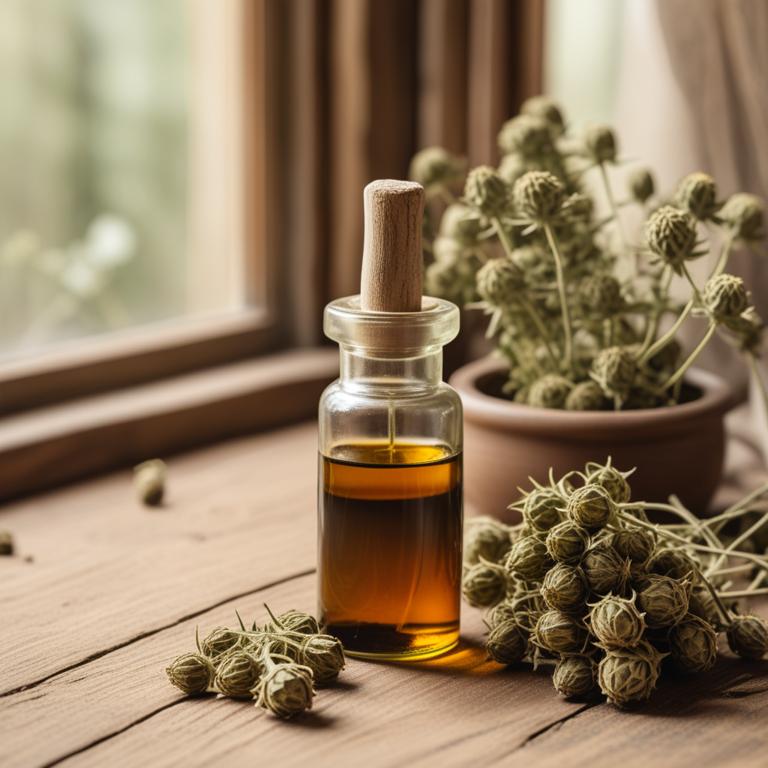
Tribulus terrestris tinctures have been traditionally used to treat peripheral arterial occlusive disease, a condition characterized by the narrowing of blood vessels in the legs.
The bioactive constituents of Tribulus terrestris tinctures, including saponins and alkaloids, help to improve blood flow and reduce inflammation, thereby alleviating symptoms of the ailment.
By increasing nitric oxide production and relaxing vascular smooth muscle, Tribulus terrestris tinctures help to improve blood circulation and reduce the risk of cardiovascular complications associated with peripheral arterial occlusive disease.
The benefits of using Tribulus terrestris tinctures to treat this ailment include improved symptoms, enhanced quality of life, and reduced reliance on pharmaceutical medications.
9. Eucommia ulmoides tinctures

Eucommia ulmoides tinctures have been traditionally used to treat peripheral arterial occlusive disease (PAOD) due to their vasodilatory and anti-inflammatory properties.
The tannins and lignans present in Eucommia ulmoides tinctures help to improve blood circulation and reduce oxidative stress, thereby alleviating the symptoms of PAOD.
The bioactive constituents, including eucommidin and eucommulin, exhibit vasodilatory and anti-platelet aggregation activities, which help to improve blood flow and reduce the risk of thrombosis.
By improving blood circulation and reducing inflammation, Eucommia ulmoides tinctures can help to relieve pain, improve walking distance, and enhance the quality of life in patients with PAOD.